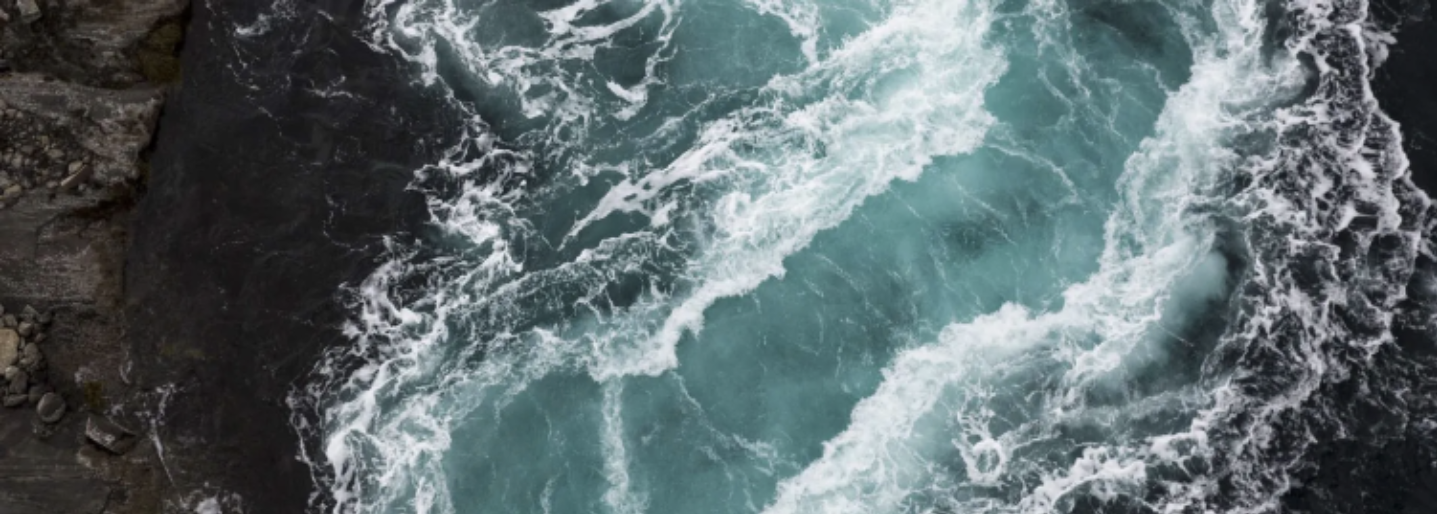
According to a new study published in Nature Communications, our ocean currents could collapse as soon as 2025. This is frightening news! However, many researchers are underway to understand more about this and what this could mean to us and our planet.
It is important to understand what are ocean currents and why they are important to us and marine life. To simplify the definition of these dynamic currents, they are the movement of saltwater driven by gravity, wind, and water density.
These currents regulate global climate, helping to counteract the uneven distribution of solar radiation reaching Earth’s surface. To put this into perspective, ocean currents act like a conveyor belt, transporting warm water and precipitation from the equator toward the poles and cold water from the poles to the tropics (See Figure 1).

These currents are also extremely important for ocean ecosystems and marine life. They redistribute water, heat, nutrients, and oxygen to the ocean, which living organisms require. Many species rely on ocean currents for their survival and reproduction needs, for example, sea turtles follow ocean currents to and from their feeding and breeding grounds.
Without question, many Millennial and Generation Z kids will remember their all-time favorite Pixar movie, Nemo. Do you remember the scene with Sea Turtle Crush riding the East Australian Current?
This is perhaps not an exact representation of the life cycle of sea turtles nor their use of the currents, but it brings out the strong message and good visualization. To make this serious topic a little lighter, let’s just take a moment to go back down memory lane:

Crush the Sea Turtle riding the East Australian Current (Movie: Nemo)
Even terrestrial species like tortoises and lizards use the currents to be carried away to colonize new areas. For species that are immobile, like corals and sponges, these species benefit from the currents when they reproduce, as they release volumes of planktonic larvae into the water column, allowing for those tiny creatures to be carried long distances and colonize new habitats.

For the purpose of this article, we will be answering the following questions:
1) What would happen to us if the ocean currents stopped?
2) What would happen to marine life if the ocean currents collapsed?
3) In relation to plastic pollution, what would this mean if currents stopped?
-
THE COLLAPSE OF OUR OCEAN CURRENTS

A recent study estimated that the currents could collapse between 2025 and 2095. Our weather patterns would be extremely disrupted. Without currents in the ocean, huge implications would occur.
Regional temperatures would be more extreme. We could experience extremely hot temperatures at the equator and frigid temperatures toward the poles. Winters and sea-level rises would greatly affect parts of Europe and the United States, and there would be a shift in the monsoon in the tropics.
This would result in a lot of land that would be inhabitable. In addition, huge pressure would be added to our food resources, such as crops and meat production.
2. COLLAPSE OF THE OCEAN CURRENTS, COLLAPSE FOR MARINE LIFE?

The two types of current motion (upwelling and downwelling) have a strong influence on the distribution and abundance of marine life. Without this action, marine life would struggle to survive.
As ocean currents and related processes exert relevant impacts on marine life; the most important of which is there enhancement of primary productivity. As freshwater is added to saltwater, from the melting glaciers, the circulation of oxygen in the ocean would decrease, having significant consequences on marine ecosystems and marine life.
More than 80% of marine life migrate by using currents. If no currents exist, and these species are unable to move freely to new places for feeding and breeding, they are at a high risk of becoming extinct.
“Ocean currents dictate and influence essential processes that maintain the livelihood of numerous species” (Ayoush Srivastava)
3) PLASTIC OCEAN

Everyone has heard about ‘The Great Pacific Garbage Patch’. This massive plastic dumb in the Pacific Ocean is caused by currents carrying out plastic debris from the shores and swirling in the middle of the ocean. Now what would happen if the current stopped working? Would this be a positive or negative thing?
The answer is not simple and more research needs to be conducted. However, if the currents were to stop, we would see more plastic waste off our shores and beaches, putting more coastal species and ecosystems at greater risk, as most accidentally mistake plastic for food.
Sea turtles, for example, would be nesting in plastic waste, which could greatly affect the development of hatchlings. Additionally, air quality would be worse in some places as plastic pollutes the atmosphere.

References
Sea turtle nesting and migration maps – the state of the world’s Sea Turtles: SWOT (no date) The State of the World’s Sea Turtles | SWOT. Available at: https://www.seaturtlestatus.org/printed-maps
US Department of Commerce, N.O. and A.A. (2013a) How does the ocean affect climate and weather on land?, Ocean Exploration Facts: NOAA Ocean Exploration. Available at: https://oceanexplorer.noaa.gov/facts/climate.html.
Slowdown of the motion of the ocean – climate change: Vital signs of the planet (2023) NASA. Available at: https://climate.nasa.gov/explore/ask-nasa-climate/3266/slowdown-of-the-motion-of-the-ocean/
Migratory species and climate change – cms. Available at: https://www.cms.int/sites/default/files/document/ScC14_Inf_09_Migratory_Species&Climate_Change_E_0.pdf
Hays, G.C. (2017). Ocean currents and marine life. Current Biology. 27 (11), 470–473. Available at: https://www.sciencedirect.com/science/article/pii/S0960982217300775
The Happy Turtle Straw is dedicated to reducing plastic waste in our waterways and finding new innovative solutions to help our marine life, such as endangered sea turtles.




